Help your family — and community — be prepared for a disaster
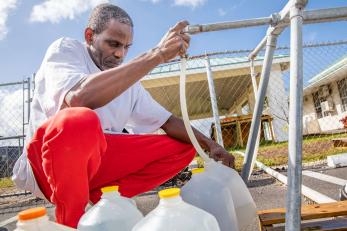
Just in the past few years, we’ve seen how emergencies and disasters can be as unpredictable as they are devastating. Our world is increasingly interconnected, making it easier for infectious diseases to spread beyond borders, while climate change intensifies hurricanes, floods, droughts, wildfires, and other extreme weather events.
We know firsthand how a crisis can change everything.
One year into the pandemic, our team members shared how the COVID-19 crisis unfolded for the people they work with. It’s real-world experience like theirs that helps guide Mercy Corps’ work, partnering with communities across the globe to build up preparedness, respond to crises, and help make a meaningful recovery possible.
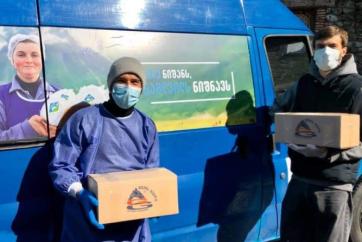

In the country of Georgia, our teams work to connect farmers with a broader and diverse set of buyers. It’s support like this that helped the honey and dairy producers we work with to not only weather the economic fallout of the pandemic, but to also share their bounties of cheese and honey with the people in their communities who need help.
When we build our personal resilience, we strengthen our wider community. Having plans in place and resources at the ready can make every bit of difference in helping you and the area you live in bounce back.
With our guide, you can prepare for many of the kinds of emergencies we respond to: power outages, violent storms, flooding, hurricanes, earthquakes, and more.
Will your family know what to do when disaster strikes?

When disaster strikes, there’s a step before finding your supplies: finding your people. You and your family may not be at home — or even in the same place — in an emergency, which is why it’s essential to make a plan with your family.
You’ll want to communicate with your loved ones, so everyone knows what each person is going to do in the event of an emergency.
Everyone should know where your family will meet. Most people choose their home as their primary meeting place. You should also have a second place in mind as a backup. It’s possible homes won’t be accessible or safe to enter. The area around your home may not be safe due to fire, poor air quality, or other hazards.

Start making decisions about where you need to go and what needs to happen immediately if an emergency happens. Where will you go if you’re at home? What if you’re at work and your kids are in school? Where will you meet each other? Who could be an emergency contact living outside your local area? Where are your important documents and contact information?
Our emergency action plan worksheet can help you and your family answer these questions. Print and laminate copies, placing them in your most frequented locations.
Having a plan and practising it may feel scary, but it’ll make surviving an actual earthquake, flood, or fire much less scary than it could be. You can even make it a fun family event! Knowing what to do and running through it together will give your family the muscle-memory they need to be prepared.
Know what you’ll need in an emergency

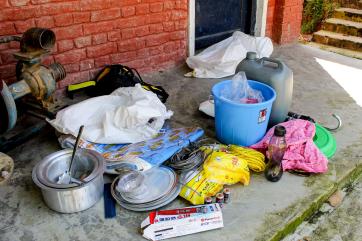
Emergency supplies are a critical part of your preparedness plan. We recommend keeping your at-home emergency supplies together in a durable container with a lid. And if you spend extended periods of time outside your home, you might wish to have additional kits ready at your office, in your car, or in your bag when you’re commuting.
Organise your supplies in a safe and protected, easily-accessible area. Your kit should contain items to help you provide for your family for two weeks. Don’t “poach” supplies for other purposes, but do review them every six months, including expiration dates, to ensure safety.
As you assemble your emergency supplies, consider what items you may already have, such as camping gear, your kitchen pantry, or first aid supplies in your medicine cabinet. Just make sure you know where the necessary items are, and ask yourself, “Where are the gaps?”
Focus first on how you can meet your most basic needs after an emergency: gathering essential preparedness supplies like water, non-perishable food, and first aid.

Water
Following a disaster, clean drinking water may be cut off or compromised through contamination. Plan to store at least one gallon of water per person per day for about 14 days. One gallon should cover drinking and sanitation. Children, nursing mothers, sick people, and medical emergencies may require even more.
Store your water in a cool, dark place. Keep bottled water in its original containers and do not open until you need to use it. Observe expiration dates. Replace your water supply about once every six months. For to-go kits, pack light-weight water packets or a water purifier in addition to small water bottles.
Non-perishable food
Buy food you’d normally eat, and store enough to last two weeks per person. Stock up on canned foods, packets, dry mixes, spices, and other staples for your home. Emergency foods should not require refrigeration, cooking, water, or special preparation.
Remember any special dietary needs. Avoid foods that make you thirsty. Choose salt-free crackers, whole grain cereals, and canned foods with high liquid content.
Don’t forget utensils, plates, cups, and a can opener!
Alternative cooking sources may be used in an emergency, such as chafing dishes, fondue pots, and camping stoves. Depending on the severity of the emergency, your gas grill might be available. Remember to follow safety procedures, and never barbecue indoors.
First aid
Since disaster responders may not be available, your first aid supplies should be capable of dealing with moderate injuries. And you might want enough supplies to treat multiple people.
Ideally, your first aid supplies would include facemasks, hand sanitizer, dressings, bandages, burn gel, splints, and antiseptic.
Prescription medicine
Talk with your doctor about how to make sure you have enough prescription medications for at least a month, if possible. Your doctor may be able to write you an extra prescription for a disaster kit. Keep your prescriptions current and be aware of their expiration dates.
At the very least, make sure any necessary medications are easy to locate and grab in case of a sudden evacuation.
Essential items
During a disaster, you may need to evacuate your home. For that level of emergency, you’ll need to go beyond planning for your most basic needs and assemble a to-go kit with bottled water, nonperishable food, mess kit, first aid kit, necessary medication, cash, and other supplies you’ll need.
Use our emergency supplies checklist as you gather what you need to shelter-in-place at home or in case you need to evacuate quickly.
Legal documents
To help you think about what documents you may need access to, FEMA provides a checklist on its website, called the Emergency Financial First Aid Kit (EFFAK).
At a minimum, you should consider having photocopies of your identification, credit card and banking information, health insurance information, and household contacts.
Pet safety
Your pets will depend on you in the event of a disaster, so think about how you can be there for them in advance.
Make sure your pets can be properly identified with an ID tag or microchip that can be read at most animal shelters.
Arrange for a neighbor who is familiar and friendly with your pets to help in case you can’t reconnect with them immediately after an emergency, keeping a list with several alternatives. And ensure that your designated caregiver has a key to access your home to provide care.
Include pet supplies in your family’s emergency kits, or make a specific kit for your pet. A good pet safety kit would be easy to carry, labeled, and accessible near a likely exit. Make sure everyone in your family knows where it is, including alternate caregivers.
Can your home weather the worst?
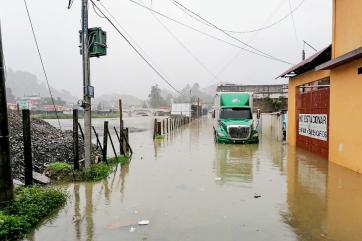
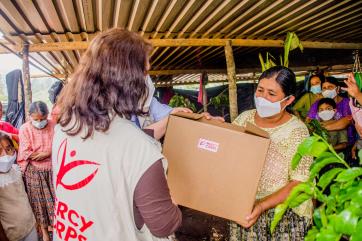
It’s also important to consider how your home will fare during a disaster and what you can do to keep it safe for you and your family.

Alternative sanitation
During some emergencies, it’s unlikely that toilets will be operable. You can use the two-bucket method with camping toilet seats and sawdust for an alternate toilet, or purchase toilet-in-a-bag solutions to keep with your supplies.
Shut off utilities
Your utilities could be affected by some disaster situations. This is why you should know how to shut off your utilities — gas, water, and electricity. If you live in a house, make sure you and others in your household know how to do this.
Know where your home’s gas shut-off valve is, and keep a wrench by the gas valve so you will have it handy in an emergency.
If you’re in an apartment or condominium, make sure you know who would be in charge of this. It’s generally recommended that if you don’t smell gas, you don’t need to turn it off. But in the event of an earthquake, there may be aftershocks and you may need to keep checking for the smell of gas as long as it’s safe to do so. Apartment or condominium dwellers should manage gas systems for their own units only. DO NOT manipulate shared building systems.
Secure furniture
Secure tall or heavy furniture to walls to prevent it from falling during an earthquake. Falling furniture can cause injury or death, and can also block exit routes. Even without the threat of an earthquake, tall furniture should be secured for child safety. Tall appliances (refrigerator, washer/dryer) can also be secured to prevent movement during an earthquake. Furniture and appliances may be secured using furniture straps or other securing devices. Lastly, avoid placing glass picture frames or chandeliers above beds.
Insure your home
Only you can determine your risk tolerance and what kind of insurance coverage is right for you. Consult your insurance agent to determine what’s available to suit your needs.
How Mercy Corps responds to and prepares people for emergencies

Between 2000 and 2019, natural disasters claimed 1.23 million lives and affected 4.2 billion people — that’s more than 53% of the world’s current population. And the spread of COVID-19 has affected every person on our planet.
In emergency situations, people need immediate access to food, water, and other basic necessities. Once recovery begins, they often need opportunities to work or other activities as well as functional markets where they can buy and sell goods.
We help provide both.
Our responses start with meeting the most urgent needs. Lack of clean water and poor sanitary conditions are a major threat to people in emergencies. We often provide water, sanitation, and hygiene support, which helps save lives and preserve health.
When possible, we choose cash-based assistance in emergency response in order to empower people to buy what they need most. We also help ensure access to adequate and safe food, since that is one of the most critical needs in an emergency.
As time passes, we focus on helping people prepare for future emergencies. Often, that means helping build back markets where people can buy and sell goods. We also explore how we can get people back to work.
We all have a part to play during an emergency. The more each of us can prepare, the better we can recover — and extend help to others in our communities. Our emergency preparedness guide and checklist can help your family, friends, and neighbors plan for the challenges that come with a disaster and what we can do to make a strong recovery.